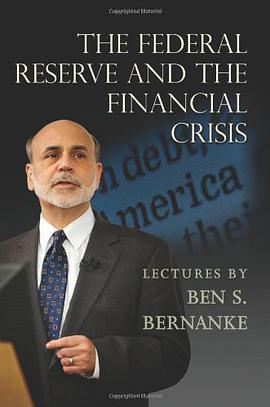-
提问 悬赏 求职 新闻 读书 功能一区
-
经济学人 二区
-
经济学论坛 三区
-
新商科论坛 四区(原工商管理论坛)
-
计量经济学与统计论坛 五区
-
数据科学与人工智能
-
金融投资论坛 六区
-
会计与财务管理论坛 七区
-
世界经济与国际贸易 八区
-
考研&考博&留学 九区
-
网络课堂 十区
-
站务区 十一区
-
休闲区 十二区
-
文库首页
- 热门文库
- 经管教学课件kindle电子书2万+全球顶级名校/投行英文文献 3000+世界顶级中英文杂志报刊【金融+经济+商学+国际政治】核心期刊投稿交流金融科技和互联网金融系列汇总【行业报告大全】BAFE文摘经管之家-Wiley文库【数学+统计+计算机编程】金融工程wwqqer系列汇总Shibor【历史+心理学+社会自然科学】2019经济报刊周刊精选经管之家-经典教科书出版社文库日新文库:Stata入门及进阶国内外经管期刊存档行为决策+行为经济学+行为金融经管之家-Springer文库Super CPA+CFA+ACCA+FRM Club学术杂志投稿经验微宽菜鸟吧产业研究院行业发展前景研究报告研报客-行业报告分享努力努力再努力Question & Answer(题库)金融万象Financial Vientiane学道会最美学习笔记Python ProgrammingFinancial Times 金融时报日新文库:高级经济学及经济数学上海财经大学课件、习题答案大全高清PDF【KYCHAN文库】外文杂志(sci ssci)投稿指南论文写作投稿实战IRT在家读MBA







 扫描二维码 下载应用
扫描二维码 下载应用



 京公网安备 11010802022788号
京公网安备 11010802022788号
您好,如需购买由经管之家论坛代理的普林斯顿出版社的原版精装书籍,欢迎添加客服微信咨询。请加客服微信:dzc123dzc
内容简介:
In 2012, Ben Bernanke, chairman of the U.S. Federal Reserve, gave a series of lectures about the Federal Reserve and the 2008 financial crisis, as part of a course at George Washington University on the role of the Federal Reserve in the economy. In this unusual event, Bernanke revealed important background and insights into the central bank's crucial actions during the worst financial crisis since the Great Depression. Taken directly from these historic talks, "The Federal Reserve and the Financial Crisis" offers insight into the guiding principles behind the Fed's activities and the lessons to be learned from its handling of recent economic challenges. Bernanke traces the origins of the Federal Reserve, from its inception in 1914 through the Second World War, and he looks at the Fed post-1945, when it began operating independently from other governmental departments such as the Treasury. During this time the Fed grappled with episodes of high inflation, finally tamed by then-chairman Paul Volcker. Bernanke also explores the period under his predecessor, Alan Greenspan, known as the Great Moderation. Bernanke then delves into the Fed's reaction to the recent financial crisis, focusing on the central bank's role as the lender of last resort and discussing efforts that injected liquidity into the banking system. Bernanke points out that monetary policies alone cannot revive the economy, and he describes ongoing structural and regulatory problems that need to be addressed. Providing first-hand knowledge of how problems in the financial system were handled, "The Federal Reserve and the Financial Crisis" will long be studied by those interested in this critical moment in history.
书评摘要:
Ben Bernanke's history of the Federal Reserve and its response to the 2008 financial crisis
In 2012, Ben Bernanke, chairman of the U.S. Federal Reserve, gave a series of lectures about the Federal Reserve and the 2008 financial crisis, as part of a course at George Washington University on the role of the Federal Reserve in the economy. In this unusual event, Bernanke revealed important background and insights into the central bank's crucial actions during the worst financial crisis since the Great Depression. Taken directly from these historic talks, The Federal Reserve and the Financial Crisis offers insight into the guiding principles behind the Fed's activities and the lessons to be learned from its handling of recent economic challenges. Bernanke traces the origins of the Federal Reserve, from its inception in 1914 through the Second World War, and he looks at the Fed post-1945, when it began operating independently from other governmental departments such as the Treasury. During this time the Fed grappled with episodes of high inflation, finally tamed by then-chairman Paul Volcker. Bernanke also explores the period under his predecessor, Alan Greenspan, known as the Great Moderation. Bernanke then delves into the Fed's reaction to the recent financial crisis, focusing on the central bank's role as the lender of last resort and discussing efforts that injected liquidity into the banking system. Bernanke points out that monetary policies alone cannot revive the economy, and he describes ongoing structural and regulatory problems that need to be addressed. Providing first-hand knowledge of how problems in the financial system were handled, The Federal Reserve and the Financial Crisis will long be studied by those interested in this critical moment in history.
作者简介:
本•伯南克(Ben Shalom Bernanke)
美国犹太裔经济学家,前美国联邦储备委员会主席。2009年《时代》杂志 “年度风云人物”,连续三年入选福布斯全球人物权势榜前十(2011~2013年),执掌美联储8年,成功带领美国度过大萧条以来最恶劣的经济危机。
生于美国佐治亚州奥古斯塔,其父为药剂师,其母为小学教师。在普林斯顿大学任教17年,曾担任经济学系主任。
2002年被美国总统小布什任命为美联储理事。2005年6月,担任美国总统经济顾问委员会主席。10月被任命为下任美国联邦储备委员会主席,接替格林斯潘。
伯南克是知名的宏观经济学家,主要研究兴趣是货币政策和宏观经济史。他是美国艺术与科学学院院士和计量经济学会会士。曾编著《宏观经济学原理》、《微观经济学原理》等教材。
2014年2月,伯南克加盟布鲁金斯学会,参与经济研究项目,重点关注经济复苏政策。